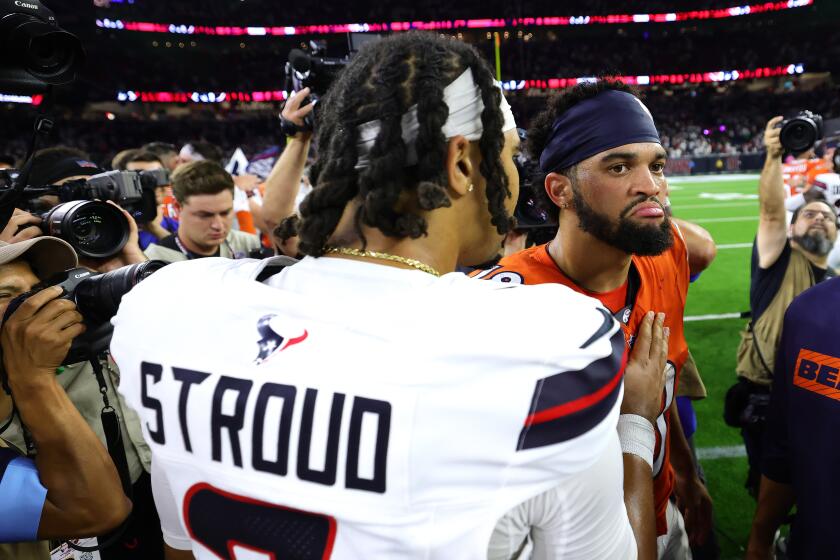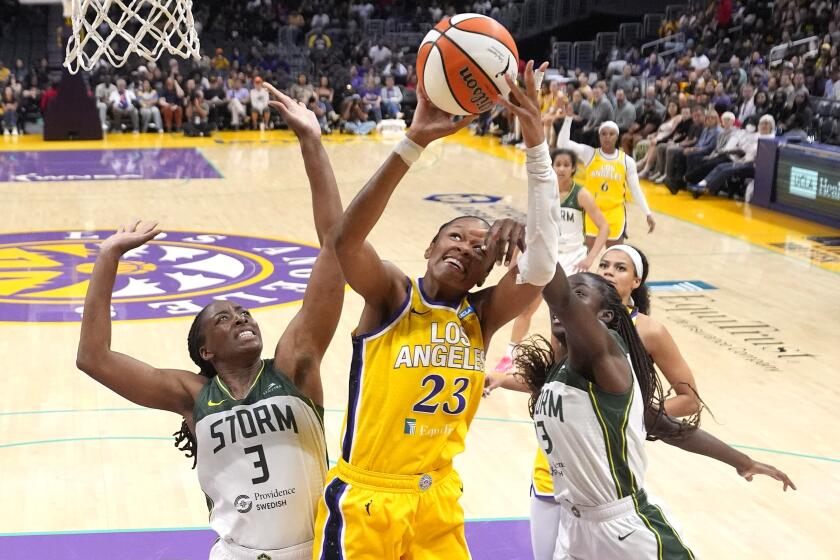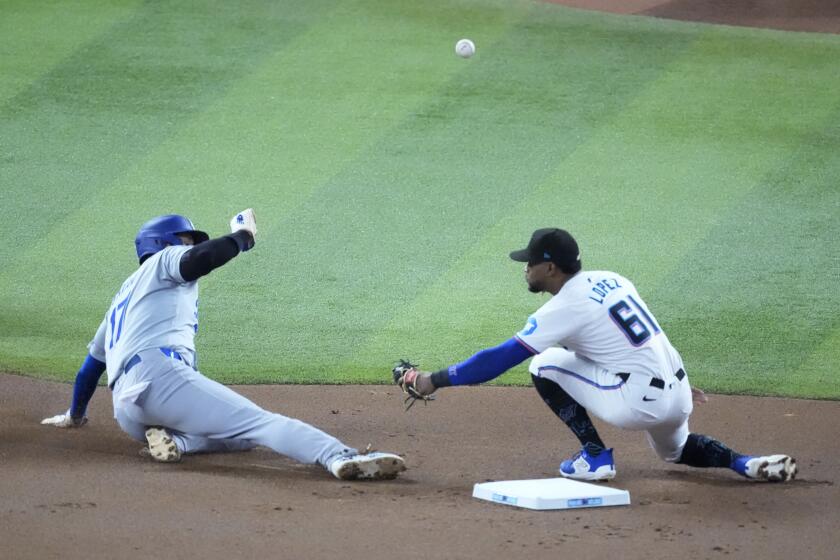It Wasn’t Only Wie Who Dropped Ball
She has been a pro for couple of weeks, but 16-year-old Michelle Wie is good at making headlines, even if they’re not close to the ones she wanted.
Meanwhile, editors and reporters of the Golf Plus section of Sports Illustrated also are showing a keen ability to make -- not write -- headlines. Here’s the background: Wie took a penalty drop for an unplayable lie after hooking a five-wood into a lantana bush on the seventh hole of her third round as a professional Saturday at Bighorn Golf Club in the Samsung World Championship.
Michael Bamberger, a senior writer for Sports Illustrated, was standing nearby. He said he believed immediately that Wie had made her drop closer to the hole, and thus was in violation of Rule 20-7 of the Rules of Golf, worth a two-shot penalty.
Wie moved on to the next hole and Bamberger checked out where the drop had been made, deciding that Wie had improved her position a step closer to the hole.
But Bamberger didn’t reveal his suspicions to an LPGA official until Sunday, after which rules official Robert O. Smith asked Wie and her caddie to return to the seventh hole. By then, she had finished the tournament.
It was determined, however, that Wie had moved her ball closer to the hole, although no one believed she did it to cheat. Wie was disqualified, the result of her signing an incorrect scorecard the previous day, that card not showing what should have been a two-shot penalty.
So who are the real losers here?
Wie? She missed out on a fourth-place paycheck for $53,126, but she already has $10 million in endorsements in the bank. And, chances are, she’s going to play a lot smarter in the future and call in a rules official whenever there’s even a hint of a question, or if she just wants to chat with somebody toting a walkie-talkie.
Her caddie? Veteran Greg Johnston, who worked for Juli Inkster for 12 years, should have sized up the situation in a hurry, insisted on calling for a rules official or even asked playing partner Grace Park to come over. Had he taken any of those actions, it would have changed everything, but he was new on the job, the group was on edge for playing slowly and he shouldn’t catch too much flak.
The tournament? Hardly. You can’t buy this kind of publicity. And, besides, Annika Sorenstam, the best player on the LPGA Tour, blew everybody away and she’s about as popular a champion as you could ask for.
The real troubling parts in this tempest are how Sports Illustrated seems to be milking the publicity angle, and the role of Bamberger, a sincere and dedicated reporter, who clearly bogeyed this hole.
No one is saying he didn’t have the right to voice his concerns over what he believed to be a rule violation. Golf is the only sport with this kind of policing by individuals, and even though the penalties that come down do not always reflect the severity of the violations, the rules are clear and have stood the test of time.
Bamberger erred in not dealing with the situation Saturday. That would have prevented Wie’s disqualification.
In a telephone conversation, Bamberger said his duty Saturday was to be a reporter first and to question Wie.
So what changed his duty Sunday, making him a whistle blower? He didn’t get his jobs mixed up, he got his days mixed up.
That was obviously Johnston’s position when he and Bamberger had an animated exchange after the disqualification, arguing that any problem should have been handled Saturday.
Meanwhile, Bamberger’s Sports Illustrated bosses are making the most of his news making. His original story was a first-person account, but that was spiked in favor of an interview by a peer at Golf Plus for a story that featured phrases such as “preserving the integrity of the competition” and “one careless mistake will not diminish Wie’s brilliant future” and even related an anecdote that B.J. Wie, Michelle’s father, shook Bamberger’s hand after the disqualification and told him he had done a good job.
In other words, not exactly a dispassionate replay of the events. Then there is the seven-picture slide show on the magazine’s website that shows Wie on that seventh hole and linking it into Bamberger’s episode. What, no streaming video? This is the journalistic equivalent of piling on.
But there’s another way to look at it. What is happening could also open up a whole new field for reporters who find ways to immerse themselves in a story. “Next: Supreme Court Justice for a Day!”
Bamberger said he considered every course of action, from doing nothing to talking to a rules official. Like Wie, he also erred in his course of action, choosing the wrong one on the wrong day.
More to Read
Go beyond the scoreboard
Get the latest on L.A.'s teams in the daily Sports Report newsletter.
You may occasionally receive promotional content from the Los Angeles Times.










